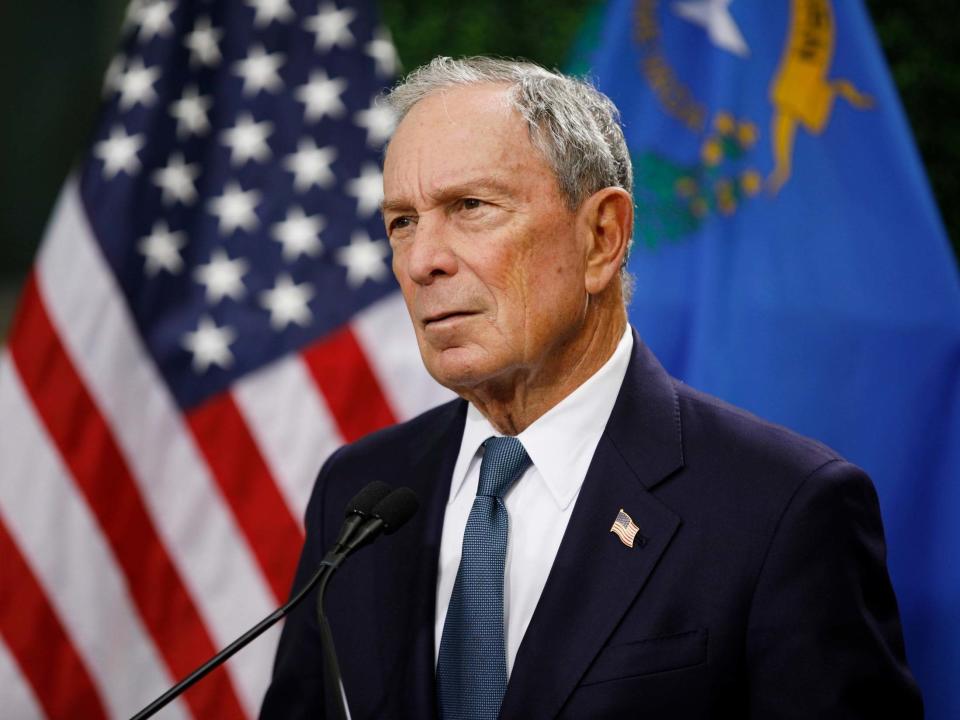Michael Bloomberg donates $500m to campaign to close every US coal-fired power plant by 2030
Michael Bloomberg, the former mayor of New York City, will donate $500m (£393m) to a new campaign to close every coal-fired power plant in the United States and halt the growth of natural gas, his foundation said on Thursday.
The new campaign, called Beyond Carbon, is designed to help eliminate coal by focusing on state and local governments. The effort will bypass Washington, where Mr Bloomberg has said national action appears unlikely because of a divided Congress and a president who denies the established science of climate change.
“We’re in a race against time with climate change, and yet there is virtually no hope of bold federal action on this issue for at least another two years,” Mr Bloomberg said in a statement. “Mother Nature is not waiting on our political calendar, and neither can we.”
Donald Trump has made reviving what he has called “clean, beautiful coal” a cornerstone of his energy agenda.
A spokesperson for Mr Bloomberg said most of the money would be spent over the next three years, although the time frame could be extended.
The donations will fund lobbying efforts by environmental groups in state legislatures, city councils and public utility commissions that aim to close coal plants and replace them with wind, solar and other renewable power. Part of the cash will also go towards efforts to elect local lawmakers who prioritise clean energy.
The campaign will be based on the need to avoid the most dangerous effects of climate change but will also emphasise the economic benefits of switching to clean energy.
More than 280 coal plants, about 40 per cent of the US coal fleet, have either closed or announced plans to close since 2010. This new campaign aims to shut down the remaining 241 plants in the country by 2030.
Mr Bloomberg was set to formally announce the initiative on Friday when he gives the commencement address at the Massachusetts Institute of Technology.
The plan comes as global warming is taking a more prominent role in the 2020 Democratic presidential race. Like the Green New Deal climate proposal, Mr Bloomberg’s plan is expected to increase the pressure on politicians who say they prioritise climate change to stake out more specific policy positions.
A number of Democratic candidates have issued climate plans that call for reaching net-zero emissions by 2050.
Governor Jay Inslee of Washington, who has made climate change the centrepiece of his presidential campaign, has called for the elimination of the US coal fleet by 2030.
Market forces — especially inexpensive natural gas and the falling costs of wind, solar and other renewables — have been the primary driver behind coal plant closures so far. Closing the remaining ones will be tougher.
Some, like the Martin Lake Power Plant in Texas and the Labadie Power Station in Missouri, are in a category of older plants that are not required to install modern pollution controls, so they tend to be very inexpensive to operate.
In the case of many plants built within the past 25 years, operators have put millions of dollars into those mandatory controls and the local authorities are more reluctant to shut the plants and lose those investments.
Still other plants are in states that have challenging regulatory structures or where the political culture is tied to sustaining the coal industry, like Kentucky or West Virginia.
Carl Pope, an adviser to Mr Bloomberg, said a key challenge would be weaning the top 10 states that use the largest amounts of electricity — including Texas, Pennsylvania and Florida — from coal and gas.
“If you move those 10 states decisively towards 100 per cent renewable electricity, that actually means that every major public utility in the United States would have to go clean,” he said.
Ensuring that natural gas does not fill the energy void left by coal will be an even trickier proposition. While the leading Democratic candidates agree that fighting climate change should be a priority for the country, none has called for limits on the expansion of natural gas.
Natural gas has been referred to as a “bridge fuel.” The idea is that it should be used to reduce dependence on dirtier energy like coal and heating oil on an interim basis while the costs of renewables like wind and solar fall.
Mr Pope said the campaign was prepared for a “major communication challenge” to persuade people that the bridge has been crossed.
Karen Harbert, president of the American Gas Association, an industry group, called Mr Bloomberg’s plan a “beyond energy” campaign.
She noted that, overall, US emissions have come down drastically over the past decade thanks in part to natural gas and said that, without it, renewable energy would stagnate.
Natural gas is no longer a transitional fuel, Ms Harbert said, but “foundational in our energy landscape.”
According to the US Energy Information Administration, a government agency that tracks energy data, natural gas meets 28 per cent of US energy demand, while about 11 per cent comes from renewable sources.
Kevin Book, managing director at ClearView Energy Partners, a research firm, called Mr Bloomberg’s campaign “a tall order.”
He estimated that replacing the country’s remaining coal capacity with wind and solar power could cost as much as $800bn in hardware and require an additional $150bn to increase energy storage capacity.
“It’s not going to be easy to do what he’s talking about doing,” Mr Book said.
Mr Bloomberg has already donated more than $150m to the Sierra Club and other environmental organisations as part of his previous environmental campaign, known as Beyond Coal. He announced in March that he would not run for president in 2020.
The New York Times


